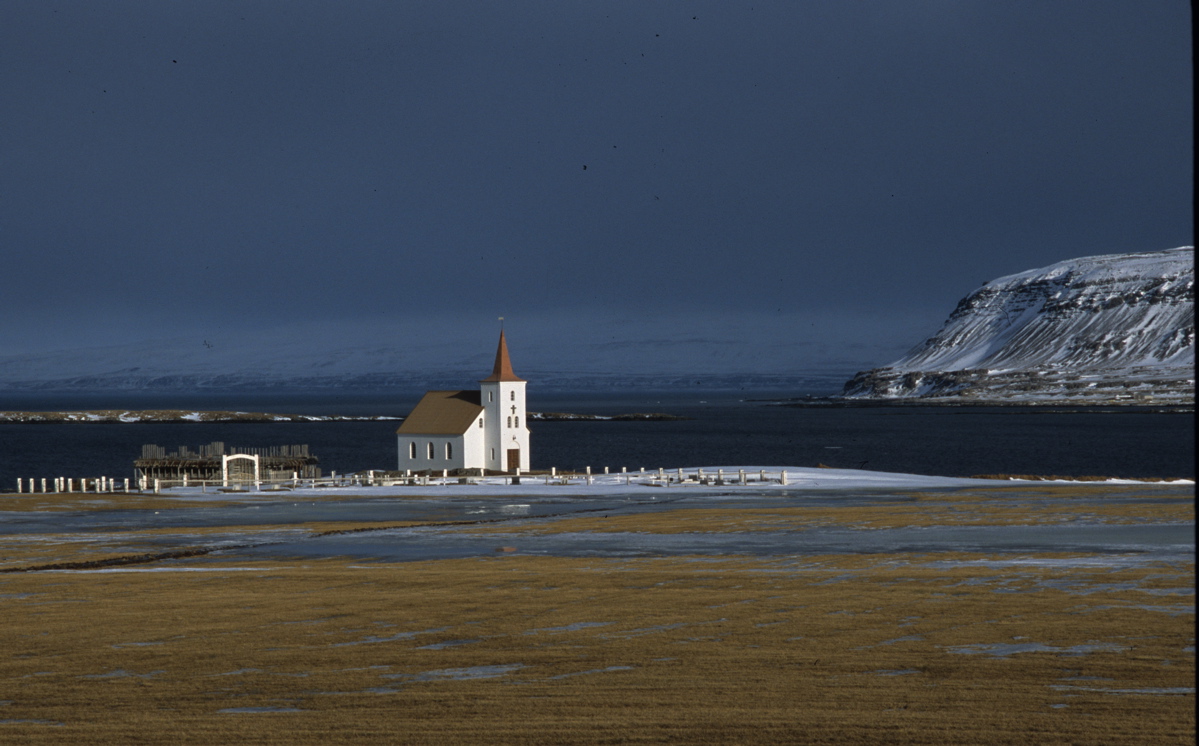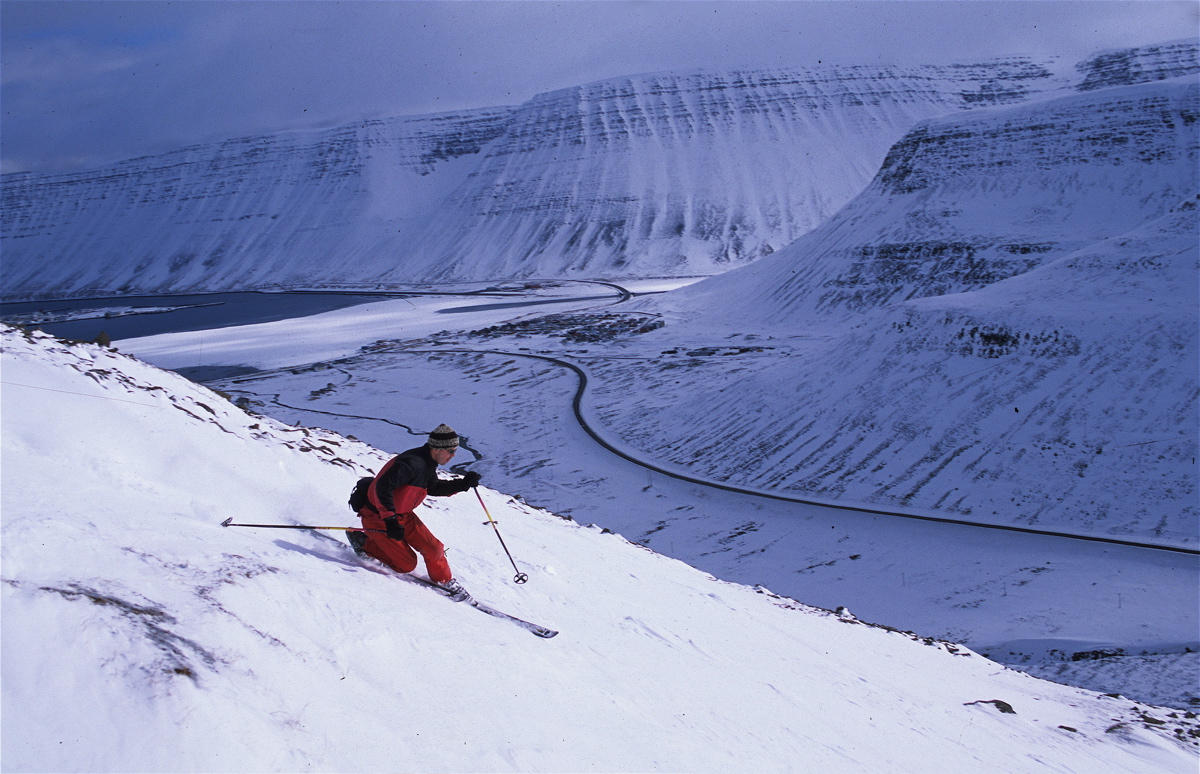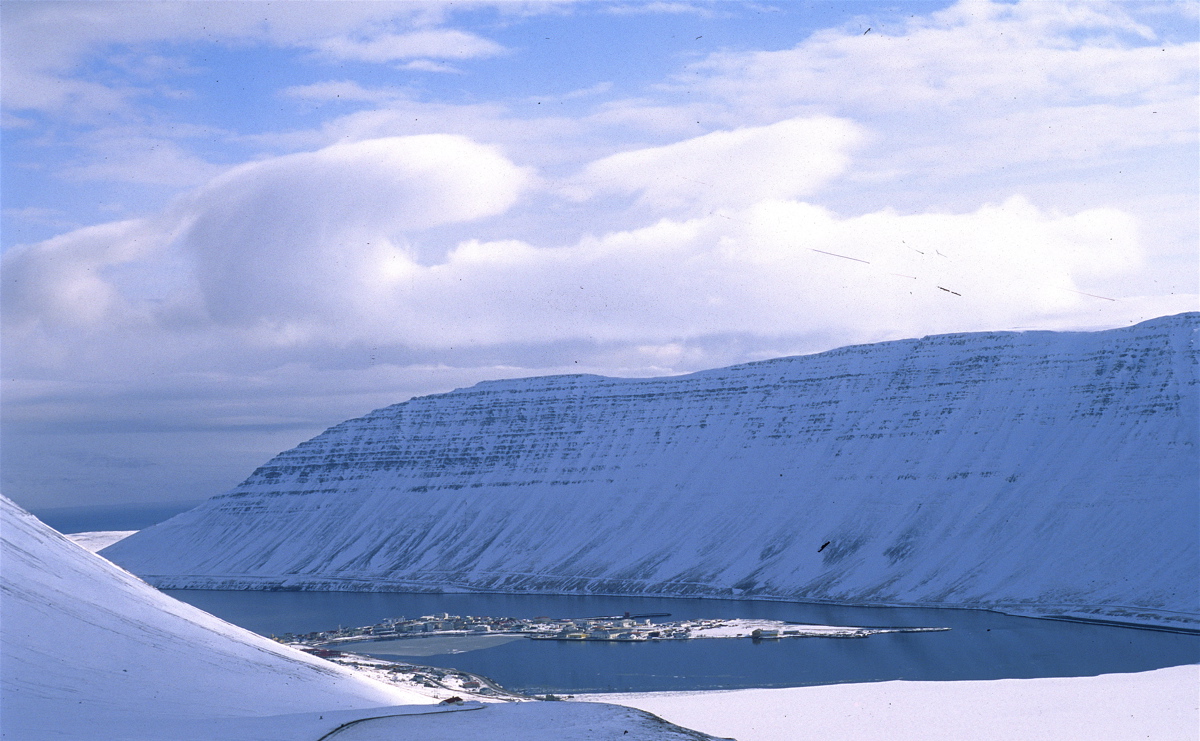Iceland: Skiing Isafjördur’s Chutes
“On this, the day before Easter in Isafjördur, Iceland’s 270,000 Vikings takes the resurrection of Jesus seriously.”
Fjording Iceland
“To loosen up for the fjord’s chutes, Rœnar suggests we take a few runs at Isafjodur’s Tungudal Ski Area.”
“There, I will learn why skiers covet Iceland’s narrow steep chutes that plummet into the sea.”
“Gumundur tells me that Greenland shark is coveted above all others.”
Fishing Boats
Icelandic Horses
“At some point the skies will clear, the danger will abate and Rœnar will link hundreds of perfect turns toward a calm, blue ocean.”
On this, the day before Easter in Isafjördur, Iceland’s 270,000 Vikings takes the resurrection of Jesus seriously. Nothing has moved for five days—unless you count the local volk who first worship in the Lutheran church of their choice then flee to Iceland’s winter resorts where they ski from dawn until dark, get wasted on Black Death, eat buried shark and boogey until breakfast.
Church, Iceland
Located on Iceland’s rugged northwest coast, the West Fjords resemble a fisherman’s work hardened hand spread palm down across the North Atlantic. Isafjördur, the regional capital juts into the tributary Skutulsfördur which in turn bends away from the storm tossed Ísafjardarjúp Fjord. All this begins to make sense when the turbo prop drops a wing in a hard banking turn against the high cliffs above Isafjördur then touches down and taxis to the terminal where Rœnar Karlsson is waiting to drive me to the village.
A world class ice climber and telemark skier who alternates scaling frozen waterfalls with ski touring across Iceland’s vast national parks, Rœnar promises to lead me to the West Fjord’s best extreme skiing.
“Yah, it is steep and you must work for your turns but the snow, yah the snow…!” he promises in an accent I can’t quite place.
To loosen up for the fjord’s chutes, Rœnar suggests we take a few runs at Isafjodur’s Tungudal Ski Area. Claiming the hills between the Westland’s glacial plateau and Isafjördur, Tungudal’s 829 vertical feet, three tows and variety of intermediate groomed runs, appeal primarily to Iceland’s families who take advantage of the intermittent sunshine that spills across Isafjördur’s barren cliffs and chutes.
Skiing Isafjödur
On the day before Easter, the ski hill is packed. Rœnar introduces me to his wife Nanni who first checks their sleeping daughter Greta in her baby buggy then joins us on the Sandfellslytfa tow that climbs the Háabrún or “High Hill” run. While Nanni returns to Greta, Rœnar and I ski off piste between Miofell or Middle Run and Hill Run where the untracked powder blanket’s the steep faces, gullies and off camber pitches that funnel back to the base.
Seen from the summit of High Hill the West Fjord’s rugged white cliffs and black lava outcrops are reflected by a calm blue sea. Rœnar promises, on a good day–on a day like today–when the winds are light, the skies are clear and the snow is stable we will trade Tungudal’s intermediate groomed runs for the cliffs above the fjords. There, I will learn why skiers covet Iceland’s narrow steep chutes that plummet into the sea.
The major obstacle to skiing in Isafjördur is the weather. When high pressure builds over Greenland and low pressure stalls south of Iceland the resulting collision explodes above the West Fjords in a blizzard that crushes visibility and punches avalanche warnings into the red zone.
On Easter Day, the sky continues to grow darker, more oppressive and late that afternoon storm clouds lower from the north. That night, while Icelanders celebrate this most holy of holidays the first flakes swirl onto Isafjördur‘s quiet streets.
Illuminated by dawn’s first blue light, the world moves sideways. A blizzard is ripping Iceland’s national flag to shreds. Cold, light but driven by a sixty mile an hour wind, the snow both closes the road back to Reykjavik and spawns avalanches of the magnitude that once leveled Tungudal’s ski lifts and regularly flatten surrounding villages.
Shark
Lingering in the Hotel Isafjördur’s dining room, I pick at my pickled herring and watch the harbor’s pack ice fracture like decks of blue cards. I’m learning to love Iceland’s traditional breakfast. Along with eggs, bacon, cereals, jams and toast, the Hotel Isafjördur offers a choice of herring pickled in oil, mustard, tomato or brine. And while I’ve sampled marinated gravlax, sardines, oysters and squid preserved in a variety of interesting, but decidedly unfamiliar liquids, the hotel doesn’t stock shark.
“It’s something of an acquired taste,” Rœnar warns me as we turn into Gumundur Páll’s Shark factory outside of Hnífsdalur Village. Gumundur tells me that Greenland shark is coveted above all others. The sharks can live to be centuries old and occasionally reach eighteen feet Accidentally caught by seiners, or long liners, Greenland sharks are first gutted then buried for a year and hung in the Westland’s frigid salt air to dry. My first taste of necrotized shark rates south of eating sheep eyeballs in Alma Ata and pickled eel in Hokkaido. Similar to a Michelin radial soaked in ammonia and downed with Black Death, an Icelandic schnapps named by the government to discourage drinking (a campaign that predictably had the opposite effect) , the combination speaks to the undeniable hardiness of these latter day Vikings.
While the blizzard rages, I learn that Iceland owes its birth to continental drift, the same processes that divided Australia from China and South America from Africa. Geologists calculate the mid-Atlantic trench is dividing at an inch per year. As the continents separate, magma is drawn to the surface where it fuels Iceland’s hot springs and volcanoes. In the scope of a human life, an inch a year amounts to six feet….an extreme rate that if sustained will add a mile to the distance between London and New York every eight hundred years. Twenty miles every 16,000 years, Iceland approximates a block of ice floating on an ocean of boiling rock.
Only the toughest of the tough survived on this harsh mix of hot black rocks and raging blue ice. Icelanders claim (with some historical justification) that they are direct descendants of the Vikings. Spoken Icelandic differs little from that of the original Norse seafarers who settled Iceland in the 9th century. From here, Leif Eriksson, one of Iceland’s prodigal sons voyaged to claim Newfoundland five hundred years before Columbus anchored off Cuba.
The blizzard howled through a second day. While browsing Isafjördur‘s shops, I am drawn to a talisman from Iceland’s age of black magic. Shaped like a snow flake, it speaks of a dark power that once held local farmers in thrall. Twenty six were burned at a stake for practicing witch craft and black magic. One was skinned alive, then tanned and now resembles a huge brown hefty bag at a nearby museum. Under those circumstances, the snow flake is a souvenir I can’t possibly resist.
Waiting for the winds to abate, I watched purse seiners off load tons of shrimp and haddock. I visited the local mariners museum, ate at a world class restaurant and jogged past Iceland’s oldest 18th century houses. And yet, as visually compelling as fresh shrimp and dried haddock, ancient wood houses and bronze propellers can be, I know I have missed the best part of this empty corner of Iceland. Above the clouds, the Westland’s steep chutes are loading with snow. At some point the skies will clear, the danger will abate and Rœnar will link hundreds of perfect turns toward a calm, blue ocean.
Rœnar Carlson, IsafjÖrdur
The truth is, good, or bad, the weather is immune to plans. Fervent prayers, or rich offerings have no effect on the high winds or blinding snow and while blizzard waned on the fourth day, by then the avalanche danger had soared into the red zone. For the coming week skiing Isafjördur‘s chutes was suicidal. Time had run out and while waiting for my plane to load, I heard the road to Reykjavik had reopened and impulsively accepted a ride back from two of Rœnar’s friends. Under ideal conditions….no snow, little wind and clear roads, it takes eight hours to drive from Isafjördur to Reykjavik. Tracing the West Fjord’s serpentine coastline, the heavily potholed dirt road consistently rips the front end out of all but the toughest SUVs. As early morning turns to late afternoon, I watch Iceland’s’ fjords, glaciers, snow covered plateaus, lava flows, villages, farms, fishing boats and ponies pass in a stark collage that reflected the strong, self sufficient people who thrive on this wild, island.



